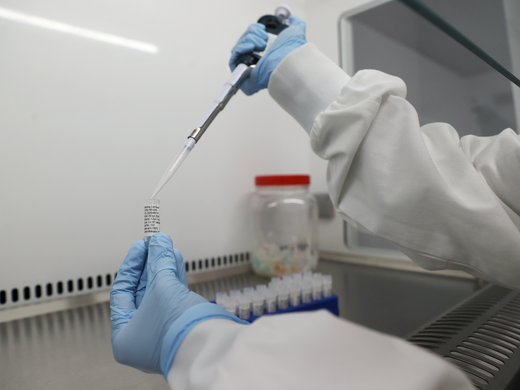The Cold War produced a sophisticated system of airborne sensors to detect releases of nuclear radiation. It first proved its worth in warning US decision makers of the shocking news of a Soviet atomic bomb test in 1949, years before intelligence agency predictions of any such Soviet capability.
Could COVID-19 and fears of future pandemics generate a similar early-warning detection system?
Enter DARPA and the UK government. DARPA, the United States’ Defense Advanced Research Program Agency, was launched in 1957 in response to fears of a Soviet lead in space following the launch of the Sputnik satellite. DARPA is famous for a long string of high-tech inventions, including the earliest iterations of the internet, the Global Positioning System, cyborg insect sentinels and even Siri (Apple’s voice-activated assistant).
Less well known is the DARPA program called SIGMA. It began in the mid-1990s as an effort to produce low-cost, highly efficient and deployable mobile sensors to detect possible incidents of nuclear terrorism. A December 2019 proof-of-concept exercise conducted in New York City involved a putative effort to smuggle radioactive isotypes. The test demonstrated the potential of the SIGMA system.
More recently the SIGMA system has been expanded in an attempt to capture a wider range of threats. Beginning in 2018, DARPA launched SIGMA+ to develop new sensors and networks for alerts about chemical, biological and explosive threats. The initial focus was on rogue state and terrorist bad actors, according to a brief description posted on the DARPA website.
But with the experience of COVID-19, DARPA is exploring a new application for the SIGMA+ concept. Could it be used to detect pandemic outbreaks?
The project, presented as a case study in the 2023 UK Biological Security Strategy, is in its experimental phase. But think of it as a high-tech cousin of wastewater sampling. It would involve networked airborne sensors, combined with big data intelligence analytics, to try to detect signs of a pandemic-level outbreak of contagious disease in a major urban centre or at a transportation hub or border entry point.
A trial run of the sensors and data collection was conducted in London, England, this summer. As yet, the results have not been published.
SIGMA+, if it proves to be another DARPA success story, could significantly enhance early warning of major global disease outbreaks. The current, deeply flawed system relies on willing and timely state reporting of disease outbreaks through the World Health Organization, and on efforts at internet monitoring for open-source intelligence. Social media monitoring, another potential tool of early warning, is nascent. Early warning, as it now exists, never took hold during the critical opening phases of the COVID-19 pandemic, as the virus emerged in China and spread worldwide.
Could a DARPA SIGMA+ system change the equation to support pandemic response? The answer obviously depends on the technology. Less obviously, it depends on a willing and responsible deployment of such sensor systems by governments of all political stripes. First adopters would likely be developed Western states. From there it might spread to some developing low- and middle-income countries. But the ultimate goal would have to be global adoption.
One obvious problem is that networked sensors could not be introduced to unwilling host states covertly by outside entities. Authoritarian states, in particular, might resist its introduction or be inclined to exploit such sensor systems, adding yet one more piece to an oppressive surveillance state.
As a result of these challenges, a patchy adoption of SIGMA+, assuming its potential can be realized, would still leave the international community stuck with early warning of global disease outbreaks that remains dependent on voluntary reporting by host countries, through a UN-mandated system. That is a practice rooted in a vision of a rules-based international system populated by compliant and helpful nation-states. To state the obvious, this is far from our current reality.
To accomplish its mission, a future SIGMA+ would need to develop a remote-sensor network, possibly based on commercial LEO (low-Earth observation) satellites and multispectral capacity. It would have to build an open data platform, be tested, gain acceptance by the World Health Organization, and be built into a new set of the International Health Regulations. These are all very ambitious, possibly unattainable, targets.
Perhaps the most ambitious plan of all would take us from the machine back to the human and find a way to marry the best of both. SIGMA+ early-warning signals might be powerful indicators of disease threats, but would have to be believed by human decision makers. As much as we might put considerable faith in advanced technological solutions, the natural human reluctance to accept terrifying news or act on worst-case scenarios (even in the form of more nuanced “reasonable” worst-case assumptions) will always be a powerful inhibitor of decision making and action. Our experience of climate change and of COVID-19 should remind us of that.
But for all the obstacles, SIGMA+ deserves a try.
Canada could even lend a hand, partnering alongside the UK government through our very own CARPA (the Canada Advanced Research Projects Agency), announced by the Liberal Party in their 2021 election campaign platform.
SIGMA+ over Ottawa, anyone?



